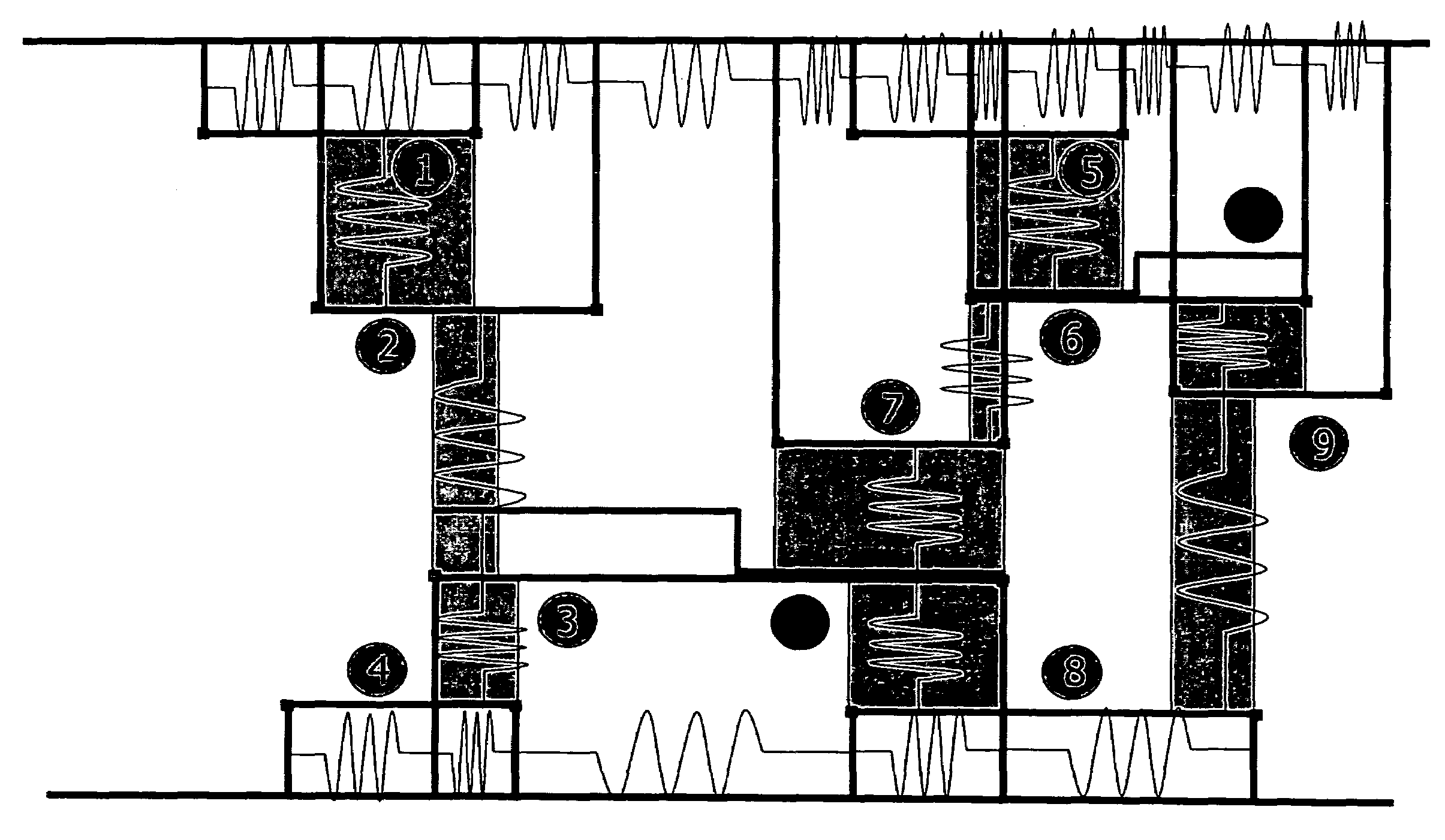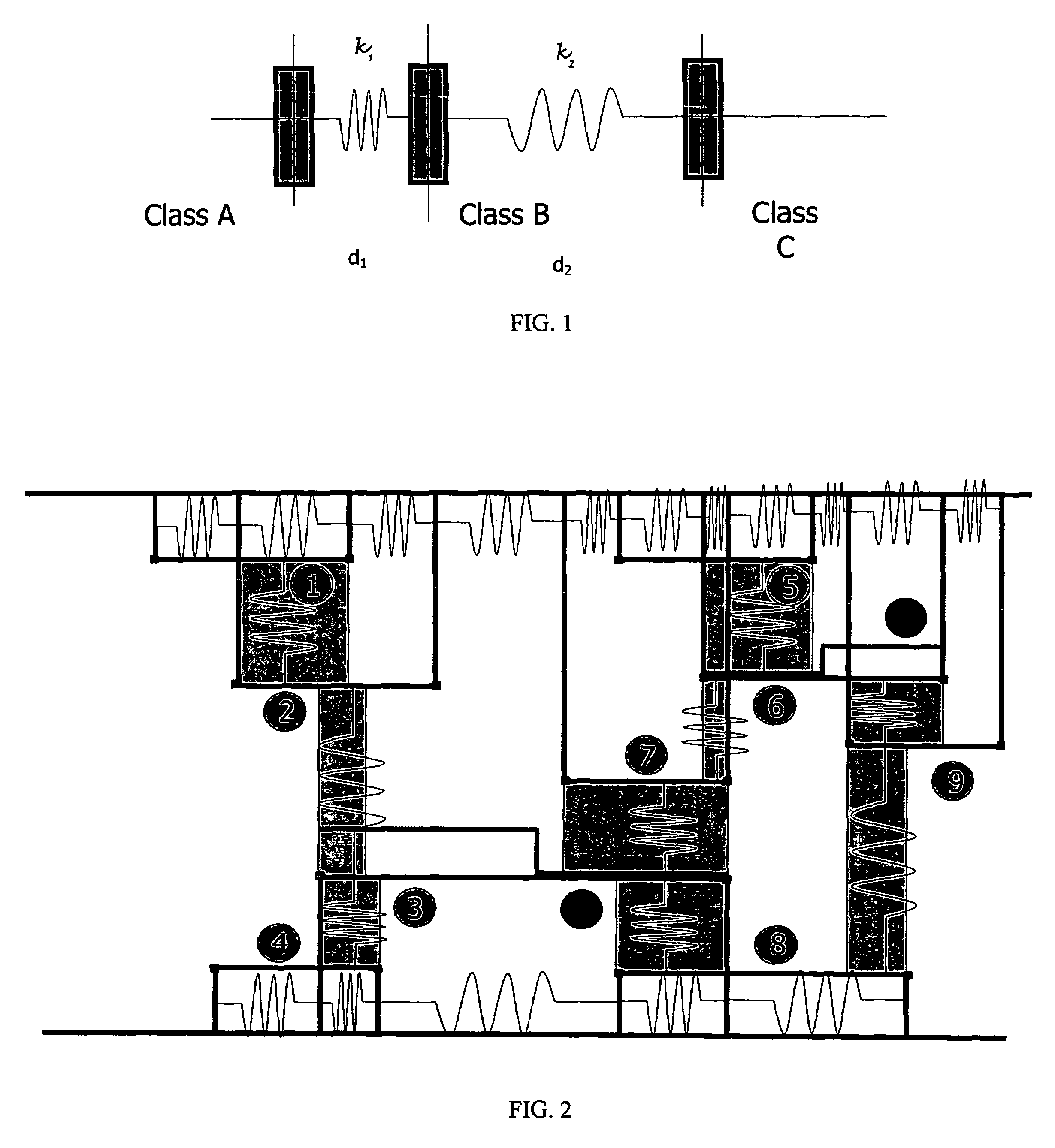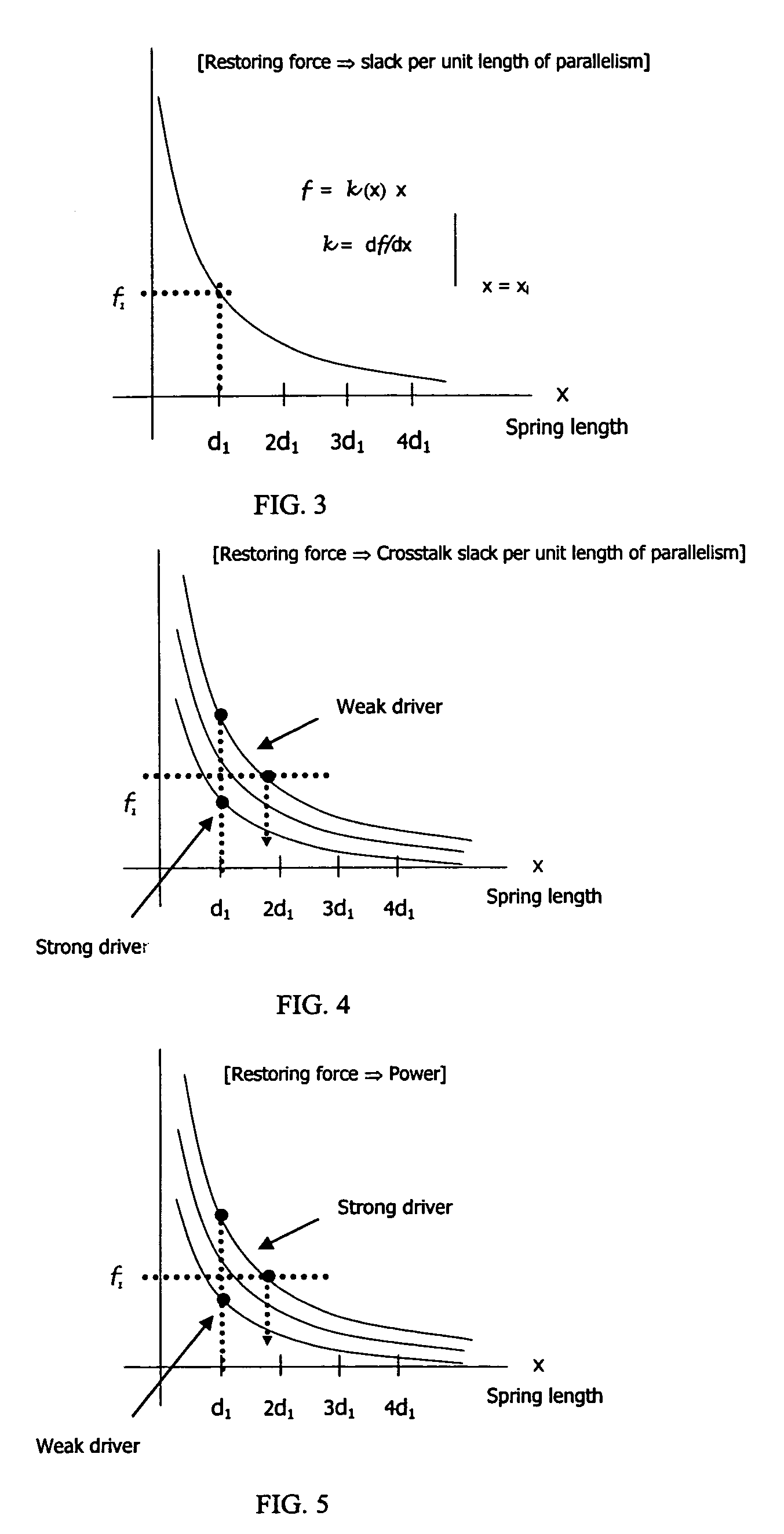Method and apparatus for controlling crosstalk, power and yield in nanometer technology ICs
a technology of crosstalk and nanometers, applied in the field of nanometer technology ics, can solve the problems of inducing glitches and timing errors, crosstalk making a-priori prediction of timing closure difficult or impossible, and no optimal trade-off between resizing cells, etc., to reduce or eliminate crosstalk violations, minimize power, and minimize coupling capacitance
- Summary
- Abstract
- Description
- Claims
- Application Information
AI Technical Summary
Benefits of technology
Problems solved by technology
Method used
Image
Examples
Embodiment Construction
[0018]The described method comprises a two-step automatic process that requires no user input once a geometric representation of the object has been provided to the apparatus. The primitives of a given IC layout are defined in terms of object points. Each primitive is a separate geometric region. All the primitives of a given layout have inter-related electrical properties, which are very complex and generally depend on many different variables. In a first step of the described method, a mesh of virtual non-linear compression springs connecting all the layout primitives is generated from the object points. Along each spring spacing, slack or power variations may be described.
[0019]The spring constant for each virtual spring embedded between interconnecting wires is chosen as follows:[0020]1. Unity spring constants for spacing variations.[0021]2. Non-linear spring constants for slack-variation versus separation distance derived from crosstalk specifications using signal integrity ana...
PUM
 Login to View More
Login to View More Abstract
Description
Claims
Application Information
 Login to View More
Login to View More - R&D
- Intellectual Property
- Life Sciences
- Materials
- Tech Scout
- Unparalleled Data Quality
- Higher Quality Content
- 60% Fewer Hallucinations
Browse by: Latest US Patents, China's latest patents, Technical Efficacy Thesaurus, Application Domain, Technology Topic, Popular Technical Reports.
© 2025 PatSnap. All rights reserved.Legal|Privacy policy|Modern Slavery Act Transparency Statement|Sitemap|About US| Contact US: help@patsnap.com



